Minelab Equinox 700 Review: UK Detectorist’s In-Depth Field Test

Written by Piotr Lesniewski
Detectorist • Scotland
As an Amazon Associate we earn commission from qualifying purchases. Read our full Affiliate Disclosure.
The Minelab Equinox series has always commanded respect.
The original Equinox 600 and 800 models were, for many of us, genuine game-changers in the way they brought multi-frequency technology to a wider audience.
So, when Minelab announced the Equinox 700, heralded as an improvement on their "best-selling treasure detector of all time", my interest was certainly piqued.
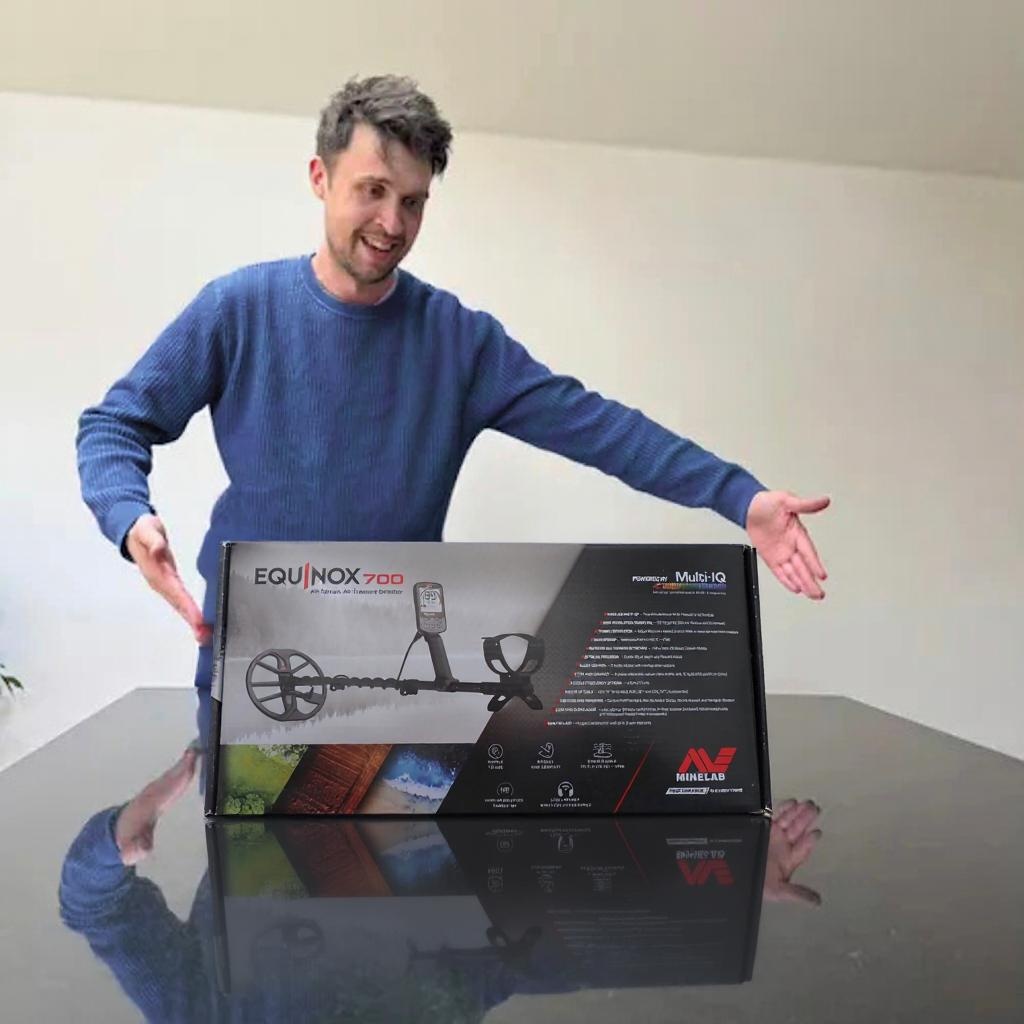
I was keen to discover if this new iteration truly built upon that strong legacy, especially for those of us navigating the often challenging, target-rich, and iron-laden soils of the British Isles. My anticipation was high, wondering if this machine could offer tangible benefits for both ambitious beginners and those looking to upgrade.

Minelab Equinox 700
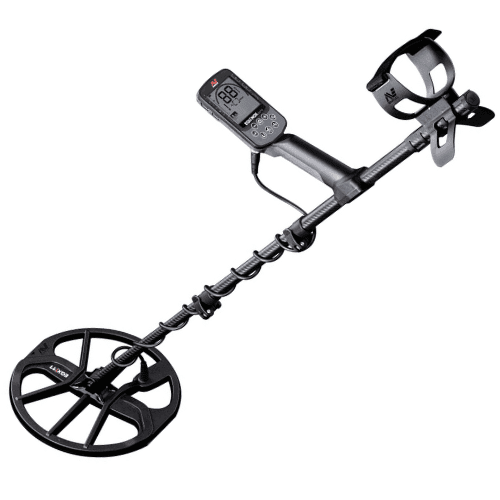
As an Amazon Associate we earn from qualifying purchases.
My Final Thoughts
The Good
- ●Lightweight & Superb Ergonomics: The carbon-fibre shaft, excellent balance, and comfortable “scorpion” armrest make it a dream for long UK detecting sessions.
- ●Outstanding All-Terrain Performance: True Multi-IQ technology ensures stable and effective operation across UK parks, fields (including mineralised soils), and beaches (wet/dry sand).
- ●Precise Target ID & Excellent Separation: The 119-segment Target ID system, combined with effective Recovery Speed and Iron Bias controls, greatly aids in distinguishing good UK finds from iron.
- ●User-Friendly Basic Operation: Very easy to get started with the well-tuned preset modes; the LCD is clear, and the interface is intuitive for beginners.
The Bad
- ●Learning Curve for Advanced Features: While easy to start with presets, mastering settings like Iron Bias and Recovery Speed for optimal UK performance takes time and practice.
- ●No Dedicated Gold Mode: This is not a significant issue for most UK hobbyists primarily seeking coins and relics, but it’s a differentiator from the Equinox 800/900 models.
- ●Fewer Single Frequency Options than Equinox 900: The 700 offers 4, 5, 10, 15 kHz. However, as Multi-IQ is the primary strength, this is a minor point for most customers.
- ●Internal Battery: While offering good life (10-12 hours in my tests) and USB charging (including power bank compatibility )
Equinox 700 Unboxing & Initial Setup: 9/10
My first impressions upon unboxing the Equinox 700 were genuinely positive, and it felt like a significant step up.
Straight away, the key items that would appeal to a UK detectorist stood out: the three-piece carbon-fibre shaft felt both incredibly light and reassuringly rigid, a far cry from some of the flimsier stock shafts I’ve encountered over the years. Then there were the Minelab ML85 low-latency wireless headphones; these looked and felt substantially better than older bundled headphones, promising comfort for long sessions and saving a UK user the immediate need to budget for a decent wireless audio solution.
The box also contained the practical essentials: the USB charging cable with its neat magnetic connector, a set of multi-language screen protectors, and the Getting Started Guide.
The inclusion of these quality components as standard is a smart move by Minelab. For a UK user, particularly an ambitious beginner, having a robust, lightweight carbon-fibre shaft from the get-go means one less aftermarket upgrade to consider down the line.
Similarly, the ML85 headphones are a real boon; good wireless audio is crucial for picking up those faint signals, especially in windy conditions or near noisy roads, and having them included effectively absorbs a considerable extra expense into the initial price. This thoughtful packaging immediately gives the impression of a complete, ready-to-go system designed with the user’s practical needs in mind.
Describing the assembly process as “easy” would be an understatement; it was utterly straightforward and tool-free.
The three-piece carbon-fibre shaft sections slotted together with a satisfying smoothness, and the new cam-locks, a noticeable improvement, secured everything with a quick twist, resulting in a very firm and wiggle-free connection. I had the entire machine assembled and ready for its first swing in literally a couple of minutes.
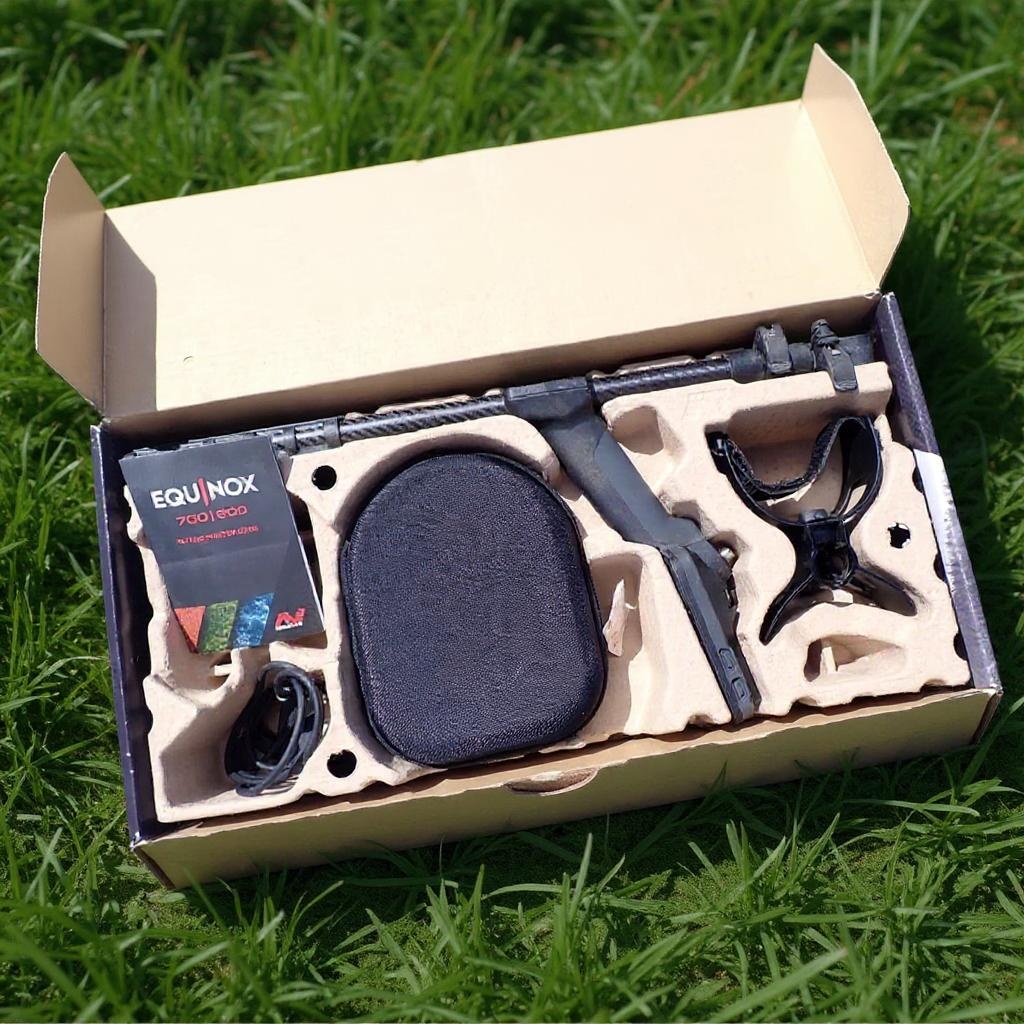
For a beginner, this ease of assembly is fantastic, as it removes any initial intimidation and allows them to get to the exciting part – detecting – almost immediately.
My tip for a beginner would be to take a moment to ensure the cam-locks are firmly tightened, but not over-tightened. Also, familiarise yourself with the coil connector; it’s a simple push and twist, but ensuring it’s correctly seated is vital for performance.
The simplicity of the setup means you can be out in your garden or a test patch within minutes of opening the box, which is exactly what you want when a new piece of detecting kit arrives. This hassle-free start is a big plus point.
The initial feel of the components was one of reassuring quality and thoughtful engineering. Holding the assembled Equinox 700, the tactile impression was that of a premium piece of equipment, not a flimsy toy.
The plastics used for the control housing and the new “Scorpion” armrest felt robust and durable, designed to withstand the inevitable knocks and scrapes of fieldwork. The carbon-fibre shaft, as mentioned, contributed significantly to this quality feel, lending both lightness and rigidity.
Compared to some older machines I’ve handled, including the original Equinox 600, the 700 definitely gives an impression of enhanced build quality and a more contemporary, polished aesthetic. It looks and feels like a more refined product, suggesting Minelab has paid close attention to design and manufacturing details.
This immediate sense of holding a well-crafted tool instils confidence before you even switch it on, which is particularly important for someone investing in what might be their first serious detector.
The included stock coil, the EQX11 11-inch Double-D, immediately struck me as a well-considered choice for a beginner operating in typical UK detecting scenarios.
Its size offers a great compromise; it’s large enough to provide excellent ground coverage on those sprawling pasture permissions or ploughed fields, meaning you can cover more ground efficiently. This is a real advantage when you’re trying to maximise your chances of walking over a good target.
However, an 11-inch coil isn’t so excessively large that it becomes unwieldy or completely unmanageable when attempting to sift through areas with moderate iron contamination, a common challenge on historic UK sites. While a smaller coil would offer better separation in truly iron-infested areas, the EQX11 is a versatile starting point.
My initial thoughts were that a beginner could learn a lot with this coil, understanding its strengths in open ground and its limitations in denser iron, before deciding if specialist coils are needed for their specific sites.
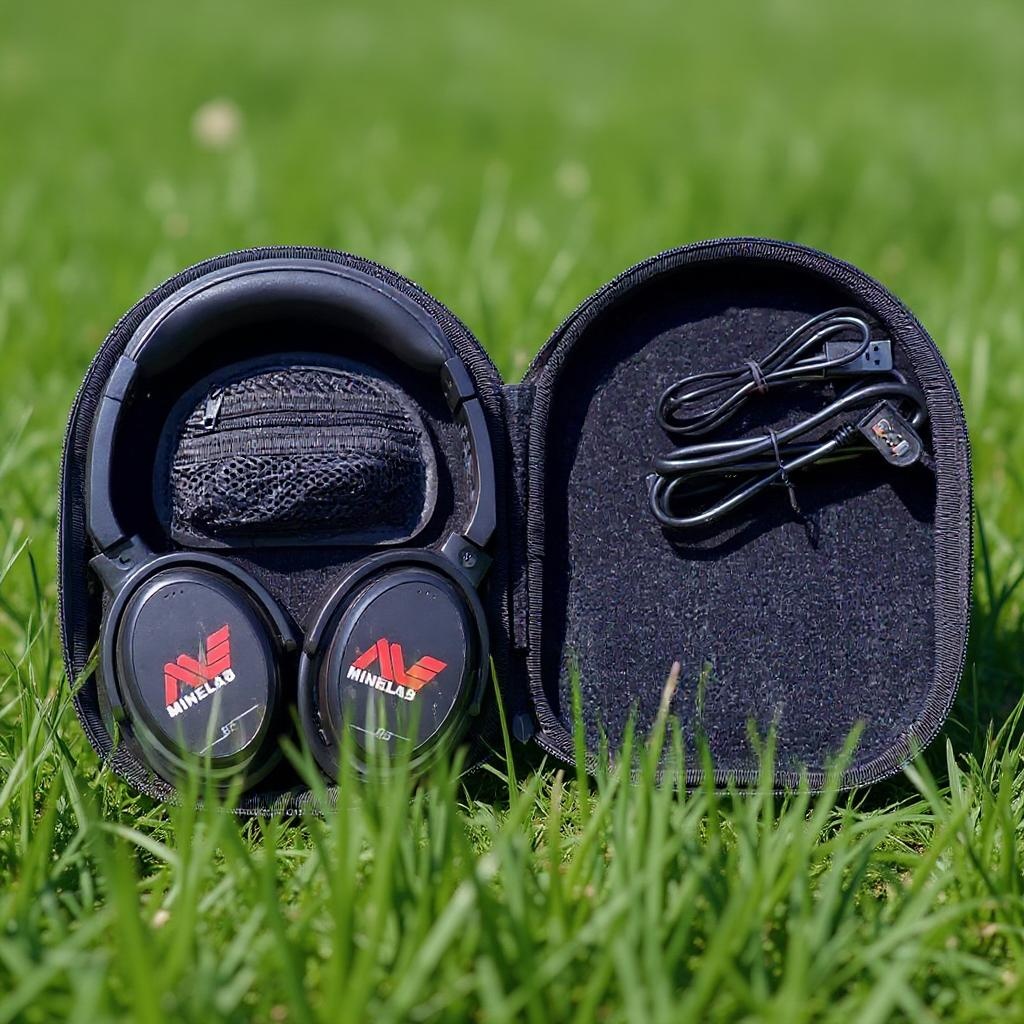
Equinox 700 Design, Build Quality & Ergonomics: 9/10
The Equinox 700’s weight and balance are, in my experience, standout features, particularly for long detecting sessions common in the UK.
Tipping the scales at only around 1.27 kg (or 2.8 lbs), it’s a genuinely lightweight machine, and the carbon-fibre shaft is a major contributor to this. I’ve had numerous full-day digs, often stretching 6 to 8 hours on pasture or along the beach, and the reduced fatigue compared to some heavier detectors I’ve used in the past is palpable.
It allows for a more enjoyable and sustained hunt.
The balance, with the standard EQX11 coil, is excellent; it doesn’t feel nose-heavy or awkward to swing. This allows for a smooth, controlled sweep without putting undue strain on the wrist, elbow, or shoulder, which is critical for maintaining concentration and detecting effectiveness over many hours.
As one fellow detectorist aptly put it, it’s "fairly light and well balanced so is easy to swing for long periods", and my extensive field use wholeheartedly confirms this.
This comfort factor cannot be overstated for UK detectorists who often dedicate entire days to their hobby.
From my experienced viewpoint, the materials and overall construction quality of the Equinox 700 stand up very well to the demands of regular UK detecting.
The carbon-fibre shaft is not just lightweight but also impressively robust, showing no signs of flex or weakness even after vigorous use on uneven terrain. The plastics used for the control box and the new “Scorpion” armrest feel durable and capable of handling the typical knocks, scrapes, and muddy conditions we encounter in British fields.
It certainly feels robust enough for regular use in our varied and often damp UK weather. I’ve had it out in light drizzle and on dewy mornings without any concern, and the build quality inspires confidence that it can handle the coastal air with its salt content, provided sensible cleaning is done post-detecting.
The improved shaft locking mechanisms are also a significant upgrade, providing a secure and stable feel that was sometimes lacking in earlier models or other detectors in its class. This addresses previous concerns about shaft wobble that some customers of older models had experienced.
The Equinox 700 boasts an IP68 waterproof rating, meaning it’s fully submersible up to 5 metres (16 feet). This is a significant improvement over the 3-metre rating of the older Equinox 600 and offers immense practical benefits for UK detectorists.
For those of us who enjoy searching riverbeds, shallow streams, or the intertidal zones on beaches, this level of water resistance provides complete peace of mind. You can wade in with confidence, knowing your investment is protected.
Beyond deliberate underwater use, this robust waterproofing is invaluable for the typical UK detecting environment. Getting caught in a sudden downpour is almost a rite of passage for British detectorists, and knowing the Equinox 700 can shrug off such soakings without issue is a huge relief.
It also makes cleaning the metal detector after a muddy session much easier, as you can rinse it down without fear of water ingress. This enhanced sealing addresses some of the “flooding issues” that were occasionally reported with earlier Equinox models, adding to the 700’s appeal as a rugged, all-weather machine.
The screen readability of the Equinox 700 is excellent across the spectrum of UK lighting conditions. The monochrome LCD provides a clear, high-contrast display of target ID numbers and settings, which I found easy to read at a glance whether under the glare of a rare bright sunny day, the more typical overcast skies, or even as dusk began to settle.
The information is well laid out, with large numerals for the target ID, making it easy to interpret quickly.
The buttons are thoughtfully placed and offer good tactile feedback, making them intuitive to operate even for someone stepping up from a more basic machine. Crucially for detecting in the UK’s often chilly weather, I found the buttons easy to use even when wearing gloves – a small but significant detail that enhances usability in colder months.
The red backlight for the display and keypad, with its adjustable brightness levels, is another fantastic feature for low-light conditions, being much easier on night-adjusted vision than a harsh white light and genuinely extending your detecting time into the evening.
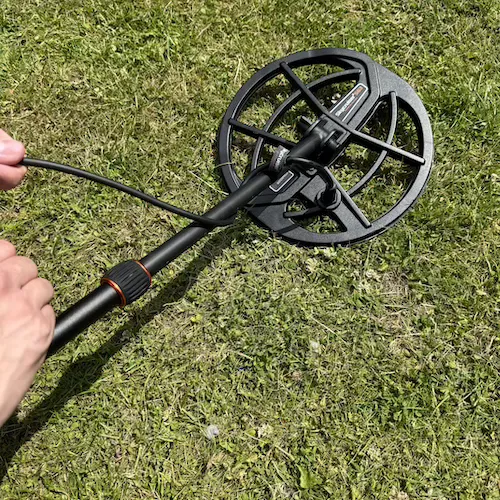
Equinox 700 Key Features & Technology: 9.5/10
Two standout technologies in the Equinox 700 that I found particularly impactful for UK detecting are its renowned Multi-IQ simultaneous multi-frequency operation and its significantly enhanced 119 High-Resolution Target ID system.
Multi-IQ is Minelab’s proprietary technology that, in essence, allows the detector to transmit, receive, and process multiple frequencies simultaneously. Instead of picking just one frequency and hoping it’s the best compromise for the ground conditions and potential targets, Multi-IQ is like having several specialist detectors working for you at once.
This simultaneous multi-frequency approach is a genuine game-changer in the varied and often mineralised soils we encounter across the UK. Whether I was on clay, sandy loam, or even conductive wet salt sand on the beaches, Multi-IQ provided a remarkably stable and accurate performance, cutting through ground noise that can plague single-frequency machines.
It enhances sensitivity to a broader range of target sizes and types, from tiny, thin hammered silver coins to larger, deeper Victorian copper pennies, giving a more complete picture of what lies beneath the coil. The Equinox 700 features a “tuned” version of Multi-IQ, suggesting subtle refinements for even greater efficiency.
The second standout, the 119 High-Resolution Target ID system, offers a much more granular scale for identifying targets compared to many other detectors, including the older Equinox 600 (which had 50 segments).
This system assigns ferrous (iron) targets IDs from -19 to 0, and non-ferrous targets IDs from 1 to 99. This expanded range is like having a higher-resolution image of the target; it allows for finer distinctions between different types of metal and even subtle variations within the same metal type.
For detecting in the UK, where our sites are often littered with a mix of historic treasures and centuries of discarded iron and modern junk, this precision is invaluable. I found the Target IDs on the 700 to be impressively consistent, especially on shallow to medium-depth targets.
This allowed me to more confidently sort treasure from trash, for example, by learning the subtle ID differences between a desirable thin silver coin and a similarly conductive but unwanted piece of modern aluminium foil. This finer degree of information helps in setting more precise discrimination patterns and ultimately leads to digging fewer unwanted targets and more of what we’re actually looking for.
Beyond those two headliners, several other features on the Equinox 700 significantly enhance the practical detecting experience for a UK user. The three core Search Modes – Park, Field, and Beach – each with two distinct profiles, provide excellent starting points for various environments.
Field mode, for instance, is optimised for historic sites and proved invaluable on my pasture permissions, while Beach mode handled the challenges of wet salt sand with impressive stability. The ability to switch between these modes and their profiles allows for quick adaptation to changing ground conditions or target priorities.
Furthermore, the built-in Control Pod Flashlight and Handgrip Vibration are more than just gimmicks; they are genuinely useful tools. The flashlight is perfect for illuminating a freshly dug plug or examining a find in fading light, saving you from fumbling for a headtorch.
The handgrip vibration is excellent for discreet detecting in public areas or for those who are hard of hearing, and it’s also surprisingly effective in very windy conditions where subtle audio cues might be missed. These thoughtful additions demonstrate Minelab’s understanding of the real-world needs of detectorists.

In-the-Field Performance Equinox 700 Review: 9/10
I put the Equinox 700 through its paces across a diverse range of my UK permissions, aiming to replicate the varied conditions many of us encounter.
This included several old pasture sites in the Midlands, known for yielding a mix of Roman, Medieval, and Post-Medieval finds, often in clay-rich soil with moderate to high iron contamination. I also spent considerable time on ploughed fields in East Anglia, where the soil is a lighter, sandy loam, and there’s always the tantalising potential for Roman and Saxon artefacts amongst more modern losses.
To round things off, I made several trips to the coast, tackling both dry sand and the challenging wet sand/saltwater conditions of popular beaches.
On these sites, the Equinox 700, primarily using Field and Beach modes with Multi-IQ, demonstrated excellent adaptability. It handled the mineralised clay soils with impressive stability, allowing me to run the sensitivity quite high without excessive chatter.
On the ploughed fields, it provided clear signals on deeper targets, and on the beach, it remained remarkably stable in the wet salt sand, a notorious challenge for many detectors. Trash levels varied from relatively clean pasture to areas heavily littered with Victorian iron and modern rubbish near public footpaths, providing a good test of its discrimination and separation capabilities.
In terms of depth on typical UK finds, I was consistently pleased with the Equinox 700’s performance.
On my Roman-era pasture, I was particularly impressed when it hit several small, corroded bronze coins – those notorious “grots” – at depths of around 6-7 inches in fairly compacted, clay-heavy soil; these gave low but repeatable non-ferrous signals that a less sensitive machine might have missed. On another permission, it consistently picked out Victorian copper pennies at solid 8-10 inch depths, and on one memorable occasion, a larger George III penny came up from a measured 11 inches in relatively clean soil.
These are practical, diggable signal depths, not just faint whispers.
When it came to hammered silver coins, which are often small, thin, and can be tricky for some detectors, the Equinox 700 gave me real confidence. I managed to unearth a lovely, albeit clipped, Elizabeth I silver penny from a good 7 inches on pasture; it sang out with a clear, sweet high tone and a remarkably stable ID in the high 20s.
While some customers have noted that "silver on edge can be challenging", my experience with flat-lying or slightly angled silver was very positive.
The machine certainly has the sensitivity for these prized UK targets, and other customers have reported good depth on coins even with reduced sensitivity due to interference.
The Equinox 700 performed admirably when good targets were lurking close to iron, a scenario all too common on historic UK sites.
Using Field 2 mode, which is noted for being "more sensitive to smaller targets and better for picking targets out from among iron", combined with a faster Recovery Speed (I often used 2 or 3 out of 3) and a lower Iron Bias setting (typically 0 or 1), I found I could often “pull out” non-ferrous signals that were right up against iron nails or other ferrous junk.
This setup does make the machine a bit “chattier,” and you will inevitably dig a bit more iron as you learn to interpret the mixed signals, but the rewards can be significant.
My tip for beginner metal detectorists struggling with iron-infested areas is to slow your sweep speed right down, overlap your sweeps, and really listen for those repeatable, higher-pitched “blips” amongst the iron grunts. Don’t be afraid to experiment with the Iron Bias; a setting of 0 will make the machine more likely to report a mixed signal as potentially good, while a higher setting will try to classify more of those ambiguous signals as iron.
It takes practice to discern a good, but partially masked, target from pure iron, but the Equinox 700 provides the tools to do so effectively. One user specifically mentioned upgrading from a lower-end machine and finding the 700 offered much better discrimination.
In most conditions I encountered, the Equinox 700 was a generally stable and well-behaved machine. The Multi-IQ technology does an excellent job of handling ground mineralisation, which is a major cause of false signals with some detectors.
On very “hot” ground or when running the sensitivity at its absolute maximum (24-25), it could become a little more “sparky” or prone to falsing on knocks or abrupt changes in ground composition. However, this was easily managed by slightly reducing the sensitivity or performing a quick noise cancel.
For someone newer to interpreting a more advanced detector’s signals, this stability is a huge plus. It means you spend more time listening to genuine target responses rather than being confused by constant chatter.
The Auto Noise Cancel function, with its 19 channels, was usually very effective at mitigating electromagnetic interference (EMI) from sources like power lines or nearby electric fences, which can plague detectors. While some suggest it "might need to be noise cancelled more often than higher-end models in very noisy environments", I found it generally quick and effective, allowing me to hunt quietly in areas where other machines might struggle.
Based on my testing and overall experience, I believe a dedicated beginner could get to grips with the basic operation of the Equinox 700 and start making enjoyable finds in typical UK scenarios relatively quickly, perhaps within a few outings.
The preset Park, Field, and Beach modes are very well-tuned and allow someone to switch on, do a quick noise cancel and ground balance (which is often best left on automatic tracking), and start swinging with a high chance of success. The clear display and intuitive button layout also help flatten the initial learning curve.
However, to truly unlock the machine’s full potential, especially in challenging UK conditions like iron-laden sites or highly mineralised ground, there is a learning curve involved in mastering the more advanced settings like Recovery Speed, Iron Bias, and custom tone adjustments. It definitely felt like a machine that rewards learning its nuances.
The more time I spent experimenting with these settings in different environments, the more confident I became in interpreting its signals and the more productive my sessions became. It’s a metal detector that can grow with you as your skills develop.
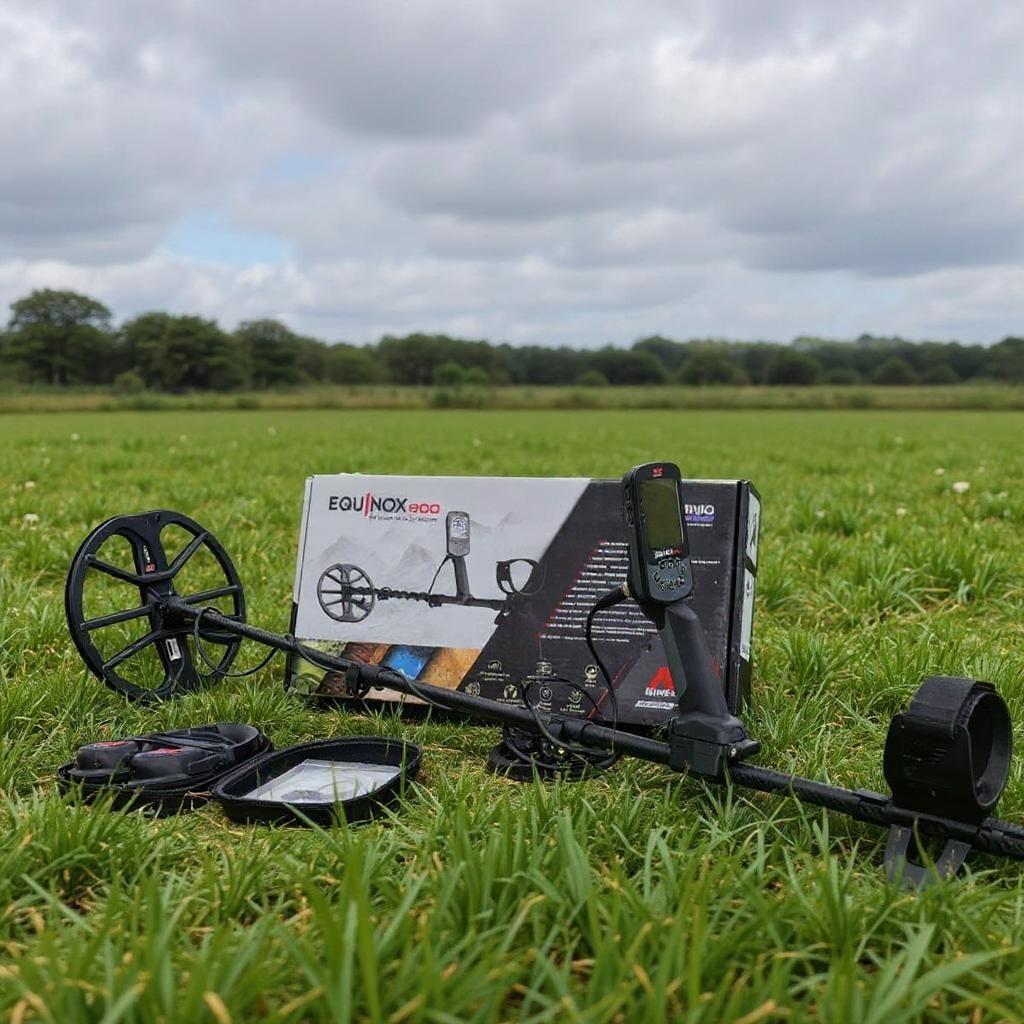
Equinox 700 User Experience & Learning Curve : 8.5/10
Beyond the initial straightforward setup, I found the Equinox 700 remarkably intuitive to operate in the field, especially once I’d spent a couple of sessions with it.
The menu system, while offering a good depth of adjustment, is logically laid out. Accessing key settings like Sensitivity, Discrimination, Ground Balance, Recovery Speed, and Iron Bias on the fly became second nature after a short while.
The main adjustment buttons are well-placed and easily accessible with the thumb of your operating hand, meaning you can tweak settings without having to stop swinging or look down at the control box for extended periods.
This ease of on-the-fly adjustment is crucial for UK detecting, where you might move from a relatively clean patch of pasture into an area with higher iron contamination, or encounter changing soil mineralisation. Being able to quickly increase or decrease sensitivity, or adjust the iron bias, allows you to optimise the detector’s performance for the specific conditions under your coil at any given moment.
While some customers new to Minelab machines might find the menus "tricky at first", I felt that anyone with a bit of experience with modern detectors, or a beginner willing to read the manual and watch a few online tutorials, would find it easy to navigate after a short familiarisation period.
For a beginner stepping up from a more basic, perhaps single-frequency machine, understanding the Equinox 700’s target ID system and its rich audio feedback in typical UK scenarios will be a key part of the learning process.
The 119-segment Target ID system provides a wealth of information, but it takes time and experience to confidently associate specific ID numbers and their consistency (or lack thereof) with particular types of targets in your local soil. For instance, learning to distinguish the often jumpy ID of a decomposing piece of coke from the more stable, albeit sometimes low, ID of a small Roman bronze coin is a skill honed over time.
The audio feedback, with options for 1, 2, 5, All Tones, and Depth Tones, is equally nuanced and informative. I mostly used 5 Tones, which gives a good range of auditory clues.
Learning to interpret not just the pitch of the tone but also its clarity, sharpness, and how it responds to sweeping the coil from different directions is vital for distinguishing good targets from iron or “iffy” signals that might be on the edge of your discrimination settings. While the machine provides excellent information, it’s the user’s ability to interpret these visual and auditory cues that ultimately leads to success.
The tones are generally considered not harsh, which helps avoid ear fatigue during long sessions.
The Equinox 700 strikes a good balance regarding its learning curve. For basic finds in relatively clean areas, it can certainly be a “switch on and go” machine if you stick to the excellent preset modes.
A beginner can achieve good results fairly quickly by relying on these. However, to truly unlock its full potential for UK detecting, especially for winkling out those deeper, smaller, or partially masked targets in challenging ground, it does require more dedication and a willingness to learn and experiment with its advanced settings.
This isn’t a criticism; rather, it’s a testament to the machine’s capabilities. It’s a detector that can perform at a high level straight out of the box for many situations, but it also offers a significant degree of customisation for those who want to fine-tune its performance to specific sites and targets.
As one user noted, "minelabs are not always turn on and go machines… You will need to do plenty of research on settings for your soil and items you intend to find".
This investment in learning is what separates a casual user from someone who can consistently get the best out of this powerful detector.
My overall feeling using the Equinox 700 was overwhelmingly positive; it genuinely made my detecting sessions both more productive and more enjoyable.
The combination of its light weight, excellent balance, and intuitive controls meant I could detect for longer periods without fatigue, allowing me to cover more ground and maintain better concentration. The confidence inspired by its Multi-IQ technology and precise Target ID system meant I was digging fewer junk targets and had a better understanding of what was likely beneath the coil before putting my spade in the ground.
This increased efficiency and the quality of information provided by the detector definitely contributed to a more rewarding experience. There’s a certain satisfaction that comes from using a tool that feels like an extension of yourself, responding predictably and providing clear, actionable feedback.
The Equinox 700 consistently delivered that feeling. Whether I was patiently working a tiny signal on an iron-littered Roman site or sweeping broad pasture for those elusive hammered coins, the machine felt like a capable and reliable partner in the hunt.

Who Is The Equinox 700 Best For in the UK?
Based on my extensive use, I believe the Minelab Equinox 700 is an outstanding choice for a wide range of UK detectorists. It’s particularly well-suited for:
Ambitious Beginners Ready to Invest: If you’re new to the hobby but want a machine that you won’t outgrow quickly, the 700 is ideal. It’s easy enough to get started with the presets, but offers a deep well of features to explore as your skills develop.
Intermediate Detectorists Looking for a Significant Upgrade: If you’re currently using an older mid-range or entry-level detector, the Equinox 700 will offer a substantial leap in performance, particularly in terms of its all-terrain capability (especially on beaches and mineralised ground thanks to Multi-IQ), target separation in iron, and the precision of its Target ID system.
Dedicated Coin Shooters and Relic Hunters: Its sensitivity to a wide range of targets, from small, thin silver coins to larger relics, makes it a versatile tool for those hunting historic sites across the UK. The Field modes are well-optimised for these scenarios.
UK Beachcombers: The Equinox 700 excels on beaches, handling both dry and wet sand, as well as saltwater conditions, with remarkable stability thanks to its Multi-IQ technology and dedicated Beach modes. Its improved waterproofing to 5m is also a major plus for coastal detecting.
Detectorists Who Value Comfort and Portability: Its lightweight design, excellent ergonomics, and collapsible carbon-fibre shaft make it a joy to use for long sessions and easy to transport.
It’s important to acknowledge that to get the absolute best from the Equinox 700, particularly in challenging UK conditions, a commitment to learning its more advanced settings and nuances is required. However, this learning journey is rewarding and well-supported by a vast amount of online resources from the Equinox user community.
The Breakdown
Final Verdict
I do recommend the Minelab Equinox 700, and I say that with confidence after many hours of use. It’s a machine that has consistently impressed me, living up to its reputation for high performance and versatility. From muddy fields to wet beaches, it has proven itself a capable and reliable partner, making my detecting sessions more efficient and, frankly, more enjoyable.
As an Amazon Associate we earn from qualifying purchases.
Minelab Equinox 700: My Final Verdict: 8/10
My time with the Minelab Equinox 700 has been thoroughly impressive and enjoyable. It’s a machine that lives up to the hype, delivering on its promise of high performance, versatility, and user-focused design.
From the moment I unboxed it, through countless hours in diverse UK fields and on beaches, it has consistently proven itself to be a capable and reliable detecting partner. It found me everything from humble Roman “grots” and Victorian pennies to a cherished silver hammered coin, but more importantly, it made the entire process of searching more efficient, engaging, and ultimately, more rewarding.
In the competitive UK market, with a typical price point around £799, the Equinox 700 offers exceptional value for the technology and features packed into it. It successfully refines and builds upon the legacy of its predecessors, incorporating key ergonomic improvements like the carbon-fibre shaft and superior wireless headphones as standard, while retaining that powerful and proven Multi-IQ core.
It’s a machine that feels both robust enough for the rigours of regular UK detecting and sophisticated enough to unearth challenging targets.
The “Equinox Experience” with the 700 is about the confidence it instils. It’s knowing you have a tool that’s well-equipped for almost any detecting scenario the British Isles can throw at you.
It manages that difficult feat of being accessible enough for a keen beginner to pick up and achieve good results with quickly, yet offering enough depth and adjustability to satisfy and grow with the more experienced detectorist. If you’re looking for a top-tier, all-terrain metal detector that truly excels in UK conditions without breaking the bank for features you might not need, the Minelab Equinox 700 should be at the very top of your consideration list.
It has certainly earned its place as a go-to machine in my own detecting arsenal.
Author Profile

Piotr Lesniewski
"Digging up the past, one signal at a time."
Polish-born, Scotland-based, and obsessed with the beep. My passion began decades ago, exploring fields with my Dziadek (grandfather). Now, with over 10 years of digging under my belt, I'm here to share everything I've learned—unfiltered and unbiased—to help you unearth your own piece of history. No sales pitches, just real field experience.